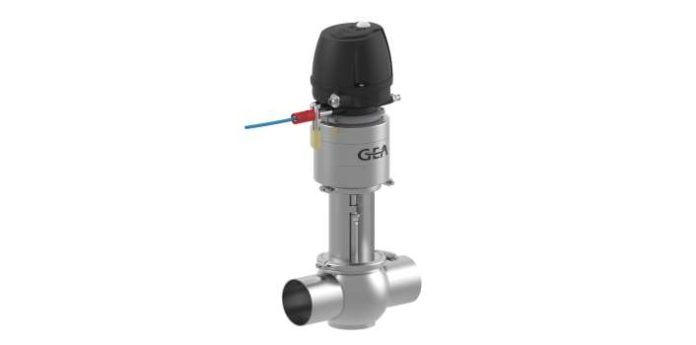
GEA has become the first valve manufacturer to develop special Lockout-Tagout (LoTo) locks for its entire hygienic valve technology range. These mechanical or pneumatic locks help plant operators effectively protect their workforce from hazards in production. After all, anyone who maintains or repairs industrial units operates in a dangerous environment: Units are subject to electrical, mechanical, chemical, hydraulic and pneumatic forces, while their components can cause serious injuries if they are not properly disconnected from energy sources. This can be prevented by so-called LoTo systems which can be used to block (Lockout) and mark (Tagout) units and equipment.
Responsibility for process technology and safety
The U.S. Occupational Safety and Health Administration (OSHA) ranks deficiencies in maintenance safety among the most common causes of accidents in plants. Above all where a number of people are working on one line, it is important to secure the area under maintenance against inadvertent intervention – for example, by means of seals – as the consequences for life and limb can be devastating. “We hear about workplace accidents during maintenance all the time,” explains Lisa Schmidt, Product Sales Manager for hygienic valve technology at GEA. This is avoidable and can easily be prevented with a systematic LoTo approach. Since the solutions currently available were not convincing for GEA valves, the company decided to produce its own package of process technology and LoTo safety systems. Says Schmidt: “We consider it our responsibility to support our customers to the best of our ability when it comes to maintaining their duty of care toward their workforces.”
GEA’s customers – manufacturers in the food and pharmaceutical industries – operate complex plants with long lengths of piping where visibility is often an issue. If, for instance, machines are repaired during ongoing operation, it is important to specifically isolate these working areas from energy sources, i.e. sources of danger. Schmidt reports: “In our case, the danger lies in the media flowing through the pipelines. Specific valves or entire valve clusters can be secured using our LoTo solutions. One Canadian customer recently ordered 1,600 LoTo devices for all their plant’s butterfly valves, while other operators explicitly designate individual valves to eliminate specific potential hazards.”
Tailored LoTo devices for each valve
A GEA LoTo unit comprises a shut-off device that fixes the valve in the open or closed position and an optional lock that only authorized individuals can open. The type of fixing varies depending on the type of valve; they are available for all nominal diameters and actuator sizes and can easily be retrofitted:
- Butterfly valves can be shut off mechanically. The disk lock version uses a pin that is pushed into the valve stem and can also be used with an extension. This principle can similarly be applied to leakage butterfly valves.
- There are two ways of shutting off single-seat valves: Either the air supply can be shut off directly on the control top or actuator using the air lock principle, or the entire actuator can be locked via a disk lock which prevents the valve disks from moving. This is advisable where a higher level of safety is desired. In the event of a water hammer, the valve remains closed, ensuring an almost completely leak-proof system.
- GEA offers a bellow lock for VESTA® valves in aseptic applications with manual actuators which is suitable for large and small nominal sizes.
GEA LoTo solutions are generally designed for single-seat valves, but the main stroke in double-seat valves can also be locked. As VARIVENT® and D-Tec® valves with lift can still be actuated, the operator should consider using further safeguards here – for example, air supply to the lifts.






